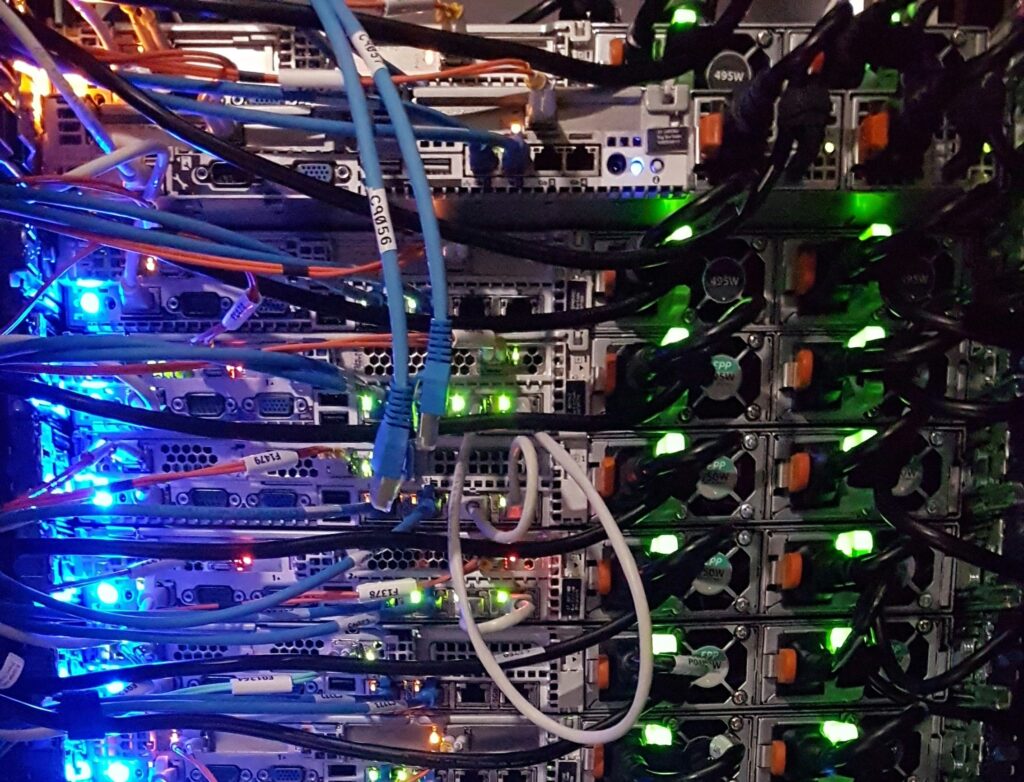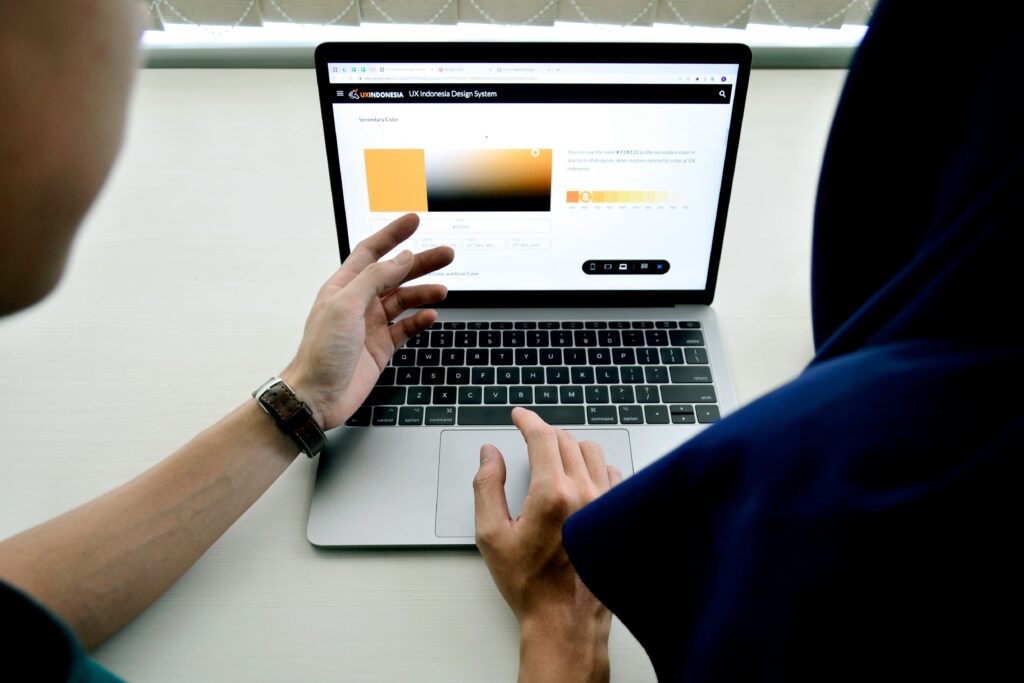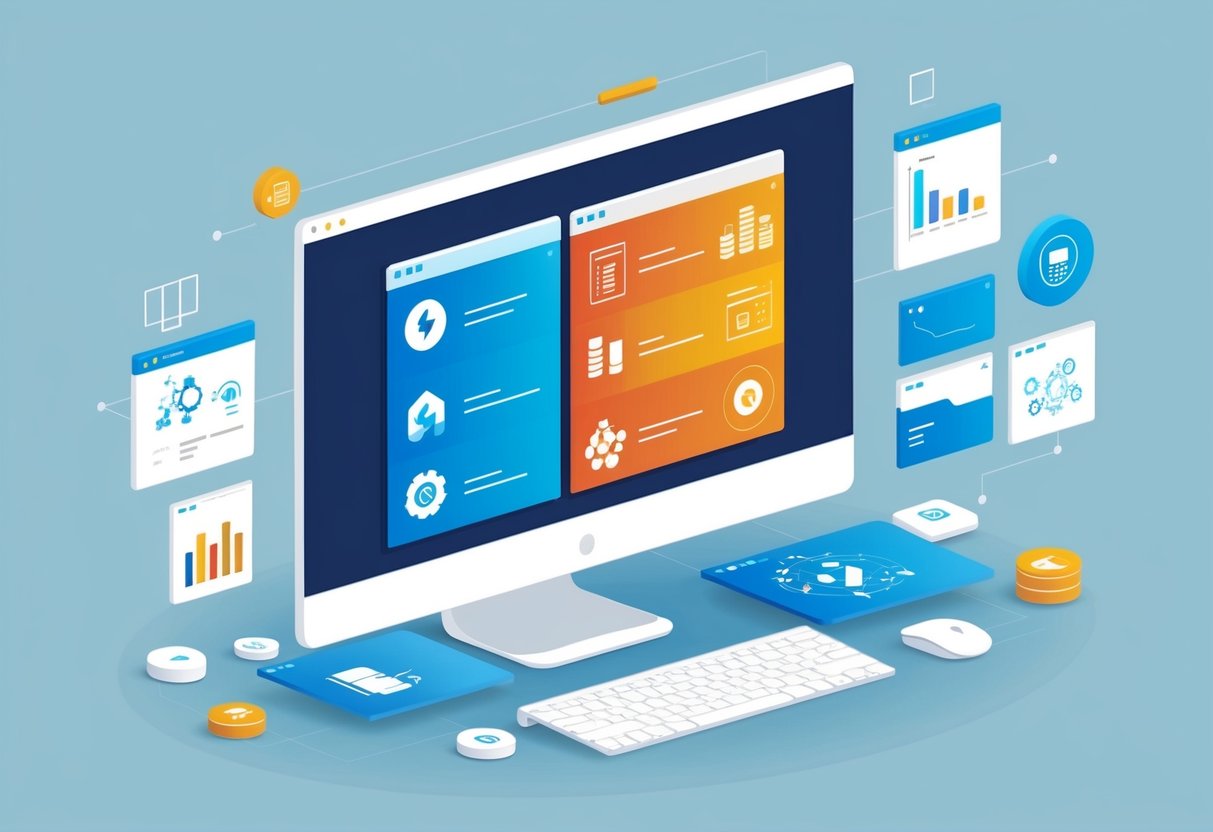As you explore the digital design world, you may notice a significant shift toward sustainable practices. Sustainable web design emphasizes creating websites that are not only visually appealing but also environmentally friendly. When we focus on energy efficiency and responsible resource management, you can contribute to a healthier planet while enhancing the user experience.
This trend is becoming essential in today’s online environment. Businesses and designers realize they have a role in reducing their carbon footprint. Incorporating elements like green hosting and optimized coding can lead to both a sustainable site and a better-performing one.
Staying ahead of the curve in sustainable web design will not only benefit the environment but also set you apart in a competitive market. Engaging with these principles now positions you as a leader in this necessary movement toward eco-friendly digital solutions.
Fundamentals of Sustainable Web Design
Sustainable web design focuses on creating websites that minimize environmental impact. With some key principles and incorporating best practices, you can reduce the digital carbon footprint of your online presence.
Defining Sustainable Web Design
Sustainable web design refers to creating websites with eco-friendly practices in mind. This involves designing sites that consume less energy, are hosted on green servers, and promote sustainability. The goal is to ensure that digital products reduce their impact on the environment while still providing a great user experience.
Many businesses and designers are now considering sustainability as a core part of their design process. This shift helps not only the planet but also makes a positive statement about social responsibility. As people become more aware of environmental issues, having a sustainable website can enhance your brand image.
Importance of Reducing Digital Carbon Footprint
The digital carbon footprint of a website is often overlooked. However, it contributes significantly to global greenhouse gas emissions. The digital world accounts for about 3.7% of these emissions, according to various studies.
Reducing your footprint means optimizing your website for speed and efficiency. Simple steps like using fewer images, optimizing code, and choosing efficient hosting can lower energy use. With these changes, you help combat climate change while providing a better experience for users who value sustainability.
Principles of Eco-Friendly Web Design Practices
There are several principles that guide eco-friendly web design practices. Here are some key guidelines to consider:
- Energy Efficiency: Optimize images and use lighter design elements to decrease loading times and energy use in your website design.
- Green Hosting: Choose hosting providers that utilize renewable energy sources, which reduces your site’s overall emissions.
- Sustainable Content: Regularly update content to maintain engagement without the need for excessive redesigns or new resources.
- Minimalist Design: Adopt a simple, clean layout, which not only enhances usability but also requires fewer resources to load.
Developing for Sustainability
Creating digital products that are both effective and eco-friendly is essential. Focusing on specific practices in website design can help you reduce your carbon footprint while improving user experience. The following points detail methods to enhance sustainability through coding and design choices.
Streamlined Coding and Optimization
Efficient coding practices are vital for sustainable web development. This involves writing clean, concise code that reduces load times. Prioritizing essential features and removing unnecessary elements can improve performance.
Utilizing frameworks and libraries that emphasize efficiency can also make a difference. Minifying CSS and JavaScript files helps decrease file sizes, which speeds up site loading. You can also assess your code regularly to find and fix issues that may slow down your website.
Image Optimization and Lazy Loading
Images are often the heaviest files on a website. Optimizing images for the web helps decrease load time and enhances performance. You can compress images in your website design to reduce their file size without losing quality. Tools like TinyPNG or ImageOptim facilitate this process.
Implementing lazy loading means that images only load when they enter the user’s view. This practice significantly reduces the initial page load time. It can lead to a better experience, especially for users on slower connections or mobile devices.
Mobile-First and Responsive Design
Prioritizing mobile-first design is crucial in today’s digital landscape. A mobile-first approach ensures that your site is functional on smartphones before adapting it for larger screens. This method improves user engagement since many people access the web via their mobile devices.
Responsive design allows your website design to adapt seamlessly to any screen size, enhancing the digital experience. This flexibility enhances usability and reduces the need for multiple versions of your site. When done correctly, it minimizes development time and helps maintain consistency across devices, which is vital for sustainability.
Hosting and Technical Infrastructure

The choice of hosting and technical infrastructure is vital in sustainable web design. Green hosting options and efficient data management can significantly reduce the environmental impact of your digital presence.
Choosing Green Hosting Providers
When selecting a hosting provider, focus on those that prioritize sustainability. Look for providers using renewable energy sources to power their servers. You can find companies that have certifications like Green Seal or are part of initiatives that promote eco-friendly practices.
Consider the data center’s energy consumption. Efficient facilities often measure their Power Usage Effectiveness (PUE), which shows how much energy is used for computing versus cooling and lighting. A lower PUE indicates better efficiency. Choose a provider that continually invests in energy-efficient hardware and sustainable practices.
Optimizing Data Transfer and Energy Use
Efficient data transfer reduces energy usage. Compressing images and optimizing code can lead to reduced data size. Minimize HTTP requests by combining files like stylesheets or JavaScripts to improve load times without losing quality.
Additionally, consider enabling browser caching, which stores website data on a user’s device, as a sustainable web design practice. This practice limits the need for repeated data transfers. Utilize tools to monitor and analyze your site’s performance and consumption to identify areas for improvement.
Leveraging Content Delivery Networks
Using a Content Delivery Network (CDN) can vastly improve your website’s speed and reduce energy consumption. CDNs store copies of your site across multiple servers globally. When a user accesses your site, they connect to the nearest server, minimizing data travel distance.
This approach reduces latency and lowers the overall energy needed for data transfer. Select a CDN provider that emphasizes sustainability by using energy-efficient practices and renewable resources. Many modern CDNs also optimize data delivery, which can lower the environmental footprint of your site.
User Experience and Accessibility

Creating a web design that emphasizes user experience and accessibility is essential. You need to focus on adopting user-centric designs, providing efficient ways for people to interact with your site, and ensuring that your platform remains eco-friendly.
Adopting User-Centric Design
User-centered design puts the user at the core of the design process. You should start by understanding your audience’s needs and preferences. Conduct surveys or interviews to gather insights that inform your design decisions.
Implement features that simplify interaction, like clear calls to action and intuitive layouts. This helps users find what they need quickly. Consider A/B testing different design elements to see what works best for your audience. Developing personas can also guide you in creating a more tailored experience.
Efficient Navigation and Dark Mode
Creating efficient pathways for users to interact with your site can greatly enhance their experience. Use clear labeling and a consistent structure to make information easy to find. Group-related content and utilize drop-down menus to keep your layout clean.
Dark mode is becoming increasingly popular among users. This feature not only reduces eye strain but also saves energy on devices with OLED screens. Offering a dark mode option can make your website more appealing and accessible to a broader audience.
Accessibility and Reduced Resource Usage
Accessibility is not a trend; it’s a necessity. Make sure your website meets the Web Content Accessibility Guidelines (WCAG). Use alt text for images, provide text alternatives for videos, and ensure keyboard navigability for all functions.
Also, consider reducing resource usage. Optimize images, limit the use of heavy scripts, and avoid auto-playing media. These practices not only make your site more accessible to users with different needs but also lower your carbon footprint.
Energy and Resource Management

Managing energy and resources is essential for creating eco-friendly digital designs. This involves using renewable energy, optimizing resources effectively, and reducing energy consumption by user devices.
Renewable Energy in Web Services
Choosing renewable energy for web hosting can significantly reduce your website’s carbon footprint. Eco-friendly hosting services often power their data centers with wind, solar, or hydropower.
When you select a green host, you support sustainable practices. This can improve your brand’s image, appealing to environmentally conscious users.
You can research hosting companies that provide detailed information about their energy sources. Many well-known services have committed to using 100% renewable energy, promoting a cleaner internet. Consider these options when launching or redesigning your site.
Caching and Resource Optimization
Caching is a powerful tool for enhancing website performance while saving energy. Storing frequently accessed data, caching reduces the need to retrieve information from the server constantly. This decreases bandwidth usage and server load, contributing to your commitment to sustainability.
Optimizing images and other resources is equally important. Large files consume more energy to load and transmit. Tools that compress images can help maintain quality while reducing file size.
Minimizing HTTP requests is another resource-saving strategy. Combining CSS and JavaScript files can streamline the loading process, leading to less energy waste.
Reducing Energy Used by User Devices
The energy used by user devices also affects overall sustainability. You can help reduce this impact by designing lightweight pages that load quickly. Fast-loading sites require less processing power, resulting in energy savings for users.
Encourage users to enable browser caching for returning visitors. This reduces energy consumption for repeated visits since the browser can display cached versions of pages.
You may also consider user alerts for energy-saving options. Simple reminders about adjusting settings can promote energy-efficient browsing habits. Make your site not just friendly to the environment, but also supportive of your users’ energy-saving goals.
Innovation and Trends in Sustainable Digital Design
Sustainable digital design is evolving with various trends that focus on energy efficiency and user experience. These developments include shifts in color palettes, the rise of voice search, and the importance of content delivery networks (CDNs) in sustainable web design practices.
Adapting to Darker Colour Palettes
Darker colour palettes are gaining popularity in web design. These schemes not only create a modern look but also enhance visual comfort.
Using dark themes can reduce energy consumption on screens. For example, OLED displays use less power when displaying black tones, making them a smarter choice for eco-conscious designs.
Additionally, dark backgrounds allow for higher contrast with text, improving readability. This can lead to better user engagement, as visitors find it easier to browse.
Some trends to consider include:
- Muted tones: These are less harsh on the eyes and can create a calming web environment.
- Minimalist design: Keeping content straightforward helps users focus while reducing page elements.
Voice Search and Eco-Conscious Practices
Voice search is becoming increasingly important in digital design. This trend encourages designers to optimize websites for voice commands.
Adapting to voice search can lead to more efficient interactions, which is an emerging trend in the future of web design. Users can find information hands-free, which is convenient and can save time.
When designing for voice search, consider using natural language processing. This ensures your site answers questions directly, improving user satisfaction and reducing the need for excessive browsing.
Additionally, eco-conscious practices align with this trend. For instance, streamline content to minimize data usage. This not only aids in faster loading times but also reduces the energy consumed by servers.
The Role of Content Delivery Networks (CDNs)
Content delivery networks (CDNs) play a crucial role in sustainable web design. CDNs distribute website content across multiple servers, reducing the distance data must travel.
This leads to faster loading times and less energy consumption. Eco-friendly CDNs can also further lower your carbon footprint. Many providers focus on energy-efficient technologies, helping to minimize resource use.
Implementing a CDN can also enhance user experience. With quicker access, visitors are less likely to leave your site out of frustration.
TL;DR: How to Make Your Website Sustainable
Creating a sustainable website involves implementing various strategies that minimize environmental impact while enhancing user experience. Start with efficient coding and optimization; writing clean, concise code is essential for reducing load times and improving performance. Prioritize essential features and remove unnecessary elements to streamline your site. Regularly audit your code to identify and resolve issues that may slow down your website, ensuring optimal functionality.
Image optimization is another critical aspect, as images often comprise the heaviest files on a website. Use tools like TinyPNG or ImageOptim to compress images without sacrificing quality. Additionally, implementing lazy loading allows images to load only when they enter the user’s view, significantly reducing initial page load times and enhancing the experience for users on slower connections or mobile devices.
Adopting a mobile-first and responsive design is vital in today’s digital landscape. A mobile-first approach ensures that your site functions seamlessly on smartphones before adapting it for larger screens, catering to the growing number of users accessing the web via mobile devices. Responsive design allows your site to adapt to any screen size, enhancing usability and minimizing the need for multiple versions, which contributes to sustainability.
The choice of hosting and technical infrastructure plays a crucial role in sustainable web design. Opt for green hosting providers that prioritize sustainability and use renewable energy sources to power their servers. Look for providers with certifications like Green Seal and those that invest in energy-efficient hardware and practices. Efficient data management is essential, as optimizing data transfer through compression, minimizing HTTP requests, and enabling browser caching can significantly reduce energy consumption.
Leveraging Content Delivery Networks (CDNs) can also enhance sustainability. CDNs store copies of your site across multiple servers globally, reducing the distance data must travel, leading to faster loading times and lower consumption. Choose CDN providers that focus on energy-efficient technologies to further lower your carbon footprint.
User experience and accessibility are paramount in sustainable web design. Implement user-centered design practices by understanding your audience’s needs and preferences. Create clear navigation pathways, utilize intuitive layouts, and consider features like dark mode, which reduces energy consumption on OLED screens. Ensure your website meets Web Content Accessibility Guidelines (WCAG) to make it usable for everyone while reducing resource usage.
Finally, stay informed about trends such as darker color palettes and voice search optimization, which can enhance both user experience and sustainability. With these practices, you can develop a website that effectively balances eco-friendliness with user satisfaction, contributing to a more sustainable digital landscape.
Frequently Asked Questions
Sustainable web design focuses on minimizing environmental impact while enhancing user experience. Here are some common questions about its principles, practices, and tools.
What are the key principles of sustainable web design?
The main principles of implementing sustainable web design include energy efficiency, using renewable resources, and reducing waste. You should aim for designs that load quickly and require less data. This includes optimizing images and minimizing the use of heavy scripts as part of sustainable design.
How does eco-friendly web design contribute to reducing digital carbon footprints?
Eco-friendly web design lowers energy consumption and greenhouse gas emissions. Choosing efficient hosting and streamlined coding helps decrease the amount of energy a website uses. This, in turn, reduces the overall digital carbon footprint.
What are some best practices for implementing sustainable web layouts?
Best practices include using clean and simple designs. Aim for a minimalist approach that avoids excessive animations or large files. Prioritize responsive design to ensure your site works well on any device without extra data use.
Can sustainable web design also improve user experience, and if so, how?
Yes, sustainable web design can enhance user experience by making sites faster and easier to navigate. A well-structured layout promotes better usability, and efficient loading times keep visitors engaged. Clear and concise content also helps users find what they need quickly.
What tools are available for web designers to create energy-efficient websites?
There are various tools that can assist in creating energy-efficient websites. For example, performance testing tools like Google PageSpeed Insights can identify areas for improvement. Also, design software that focuses on resource optimization can help in building slower-loading sites.
How is the trend of sustainable web design evolving with new digital technologies?
The trend is evolving as more designers adopt sustainable practices. New technologies, like AI and machine learning, enable better optimization of resources. Innovations in hosting and coding are also supporting the move toward more eco-friendly web solutions.


